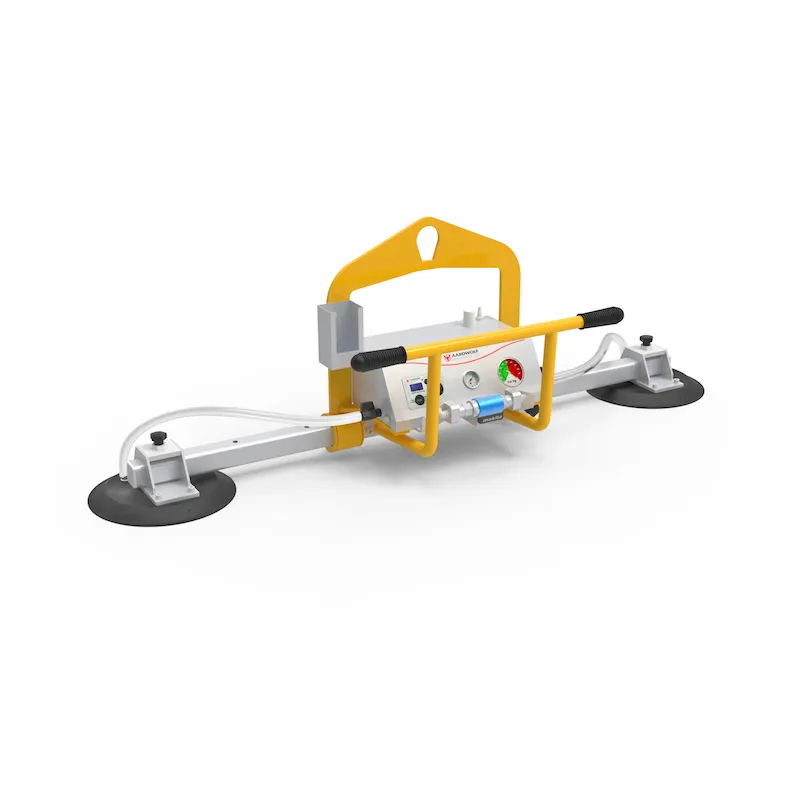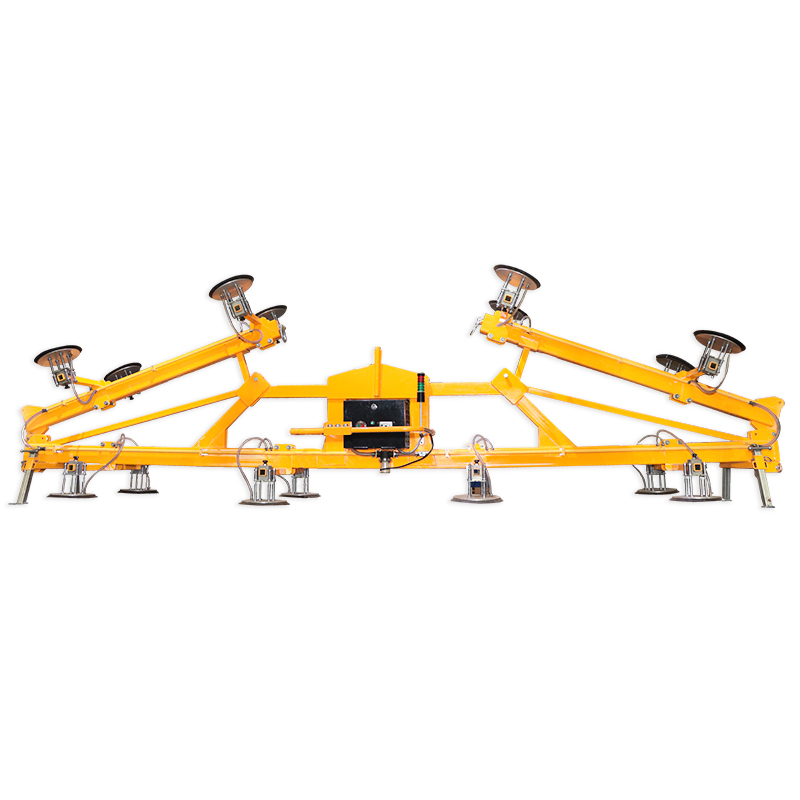In modern warehouse environments, maximizing safety, space, and efficiency is critical. As businesses scale and inventory volume increases, manual lifting solutions often fall short leading to injury risks, slow workflows, and material damage. For warehouses managing large, flat, or delicate loads, vacuum lifters have become a game-changing addition to their material handling strategies.
But where can a material handling equipment vacuum lifter be most effectively applied in warehouse operations? This article explores key warehouse areas where vacuum lifters thrive, backed by decades of experience, engineering expertise, and authoritative use case adoption—aligned with E-E-A-T (Experience, Expertise, Authoritativeness, Trustworthiness) SEO standards.

👉 What Is Material Handling?
👉 What Does Material Handling Mean?
Table of Contents
ToggleWhat Is a Vacuum Lifter?
A vacuum lifter is a motorized material handling device that uses suction to lift non-porous materials like glass sheets, stone slabs, and metal plates. Using vacuum pressure created by a pump or compressor, these tools allow for safe, efficient lifting with minimal contact, reducing damage and injury risks.
👉 What Is a Material Handling Equipment Vacuum Lifter?
👉 Vacuum Lifters
These devices are typically mounted to jib cranes, gantry cranes, or integrated into forklift systems, making them versatile and scalable for warehouses of all sizes.
Why Warehouse Operations Need Vacuum Lifters
Warehouses are dynamic environments where heavy lifting, constant movement, and tight scheduling can increase risks and limit productivity. Manual tools like wheelbarrows, pallets, and carts are useful for basic transport—but they’re inefficient and risky when handling:
- Large, flat sheets (metal, wood, glass)
- Delicate or fragile materials
- Heavy slabs used in construction or fabrication
- Bulky or awkwardly shaped components
👉 Which Is an Example of Manual Material Handling Equipment?
👉 Which of the Following Is Manual Material Handling?
E-E-A-T: Why Vacuum Lifters Are Trusted in Industrial Warehousing
✅ Experience
Used in warehouses across construction, automotive, stone, and logistics industries, vacuum lifters have a proven track record of improving productivity while reducing incidents.
✅ Expertise
Developed by engineers specializing in mechanical lifting systems, vacuum lifters are calibrated for safety, precision, and durability—especially for heavy-duty applications.
✅ Authoritativeness
Globally recognized manufacturers like Aardwolf supply certified equipment adopted by industry leaders. Their systems integrate with a variety of warehouse lifting setups.
✅ Trustworthiness
Vacuum lifters are trusted for their inbuilt safety features like pressure sensors, emergency shut-offs, backup vacuum tanks, and anti-drop fail-safes.
👉 When Handling Hazardous Materials, You Should?
Where Vacuum Lifters Are Most Effective in Warehouse Operations
1. Loading and Unloading Docks
Vacuum lifters shine at loading bays where items are moved on and off trucks or containers. Operators can lift large panels, metal sheets, or glass without additional handling equipment, reducing delays and damage.
2. Vertical Storage and Racking Zones
Warehouses using vertical racking to optimize floor space benefit from vacuum lifters paired with jib cranes or hoists. Loads are placed precisely into vertical racks, improving space utilization and reducing material slippage.
3. Assembly and Packaging Stations
Vacuum lifters accelerate repetitive lifting at workstations by:
- Positioning materials for assembly lines
- Feeding materials into conveyors in construction or packaging machines
- Lowering operator fatigue and reducing injury risk
4. Slab and Sheet Handling Areas
For warehouses handling large slabs or sheets—such as stone, glass, or plywood—vacuum lifters prevent surface damage and support stacking, aligning with safe material storage solutions.
5. Hazardous or High-Risk Zones
In warehouses managing fragile or sharp-edged materials (e.g., mirrored glass or coated metal), vacuum lifting helps avoid hand contact and reduces injury risks.
Benefits in Productivity and Safety
✔ Improve Safety on Construction Site and Warehouses
- Eliminate manual lifting strain
- Prevent dropped loads and surface damage
- Protect workers from sharp edges or awkward items
✔ Increase Construction and Warehouse Productivity
- Cut handling time per lift
- Enable one-person operations
- Align with fast-moving assembly or shipping workflows
👉 How can a Material Handling Equipment Safety and Productivity?
✔ Minimize Material Waste
- Prevent cracks, chips, or misalignment
- Avoid costly damage to fragile or finished goods
✔ Reduce Labor Cost in Construction and Warehousing
- One vacuum lifter can replace multiple manual handlers
- Streamlines integration with forklifts for construction or warehousing
👉 Why Is Material Handling Equipment Vacuum Lifter Considered More Efficient Than Manual Lifter?
Vacuum Lifters vs. Other Equipment in Warehouses
| Equipment | Best For | Limitations |
|---|---|---|
| Vacuum Lifters | Flat, heavy, or delicate loads | Not ideal for porous materials |
| Forklifts | Palletized goods and crates | Needs manual alignment for fragile items |
| Hoists and Cranes | Heavy-duty lifting | Needs pairing with appropriate gripping tool |
| Manual Carts/Wheelbarrows | Small or loose items | Labor-intensive, risky for large or fragile loads |
When Should a Warehouse Invest in a Vacuum Lifter?
You should invest when:
- You frequently handle flat panels, slabs, or sheets
- Injuries or material damage are increasing
- You want to automate material flow for efficiency
- Vertical storage is underutilized due to manual limitations
👉 When Should Invest in a Material Handling Equipment Vacuum Lifter?
Final Thoughts
So, where can a material handling equipment vacuum lifter be most effectively applied in warehouse operations?
The answer: virtually everywhere fragile, flat, or heavy items need to be moved—with safety, speed, and accuracy.
Whether integrated into jib cranes, hoists, or production lines, vacuum lifters:
- 🛡 Improve safety
- 📦 Protect valuable goods
- 🔄 Accelerate loading/unloading
- 🔧 Enhance vertical racking
- 💸 Reduce labor dependency
- 📈 Boost productivity
Learn More About Advanced Material Handling
Explore more strategic applications:
👉 Material-handling Equipment
👉 Which of the Following Is a Motorized Material Handling Device?

















Please log in to leave a comment.